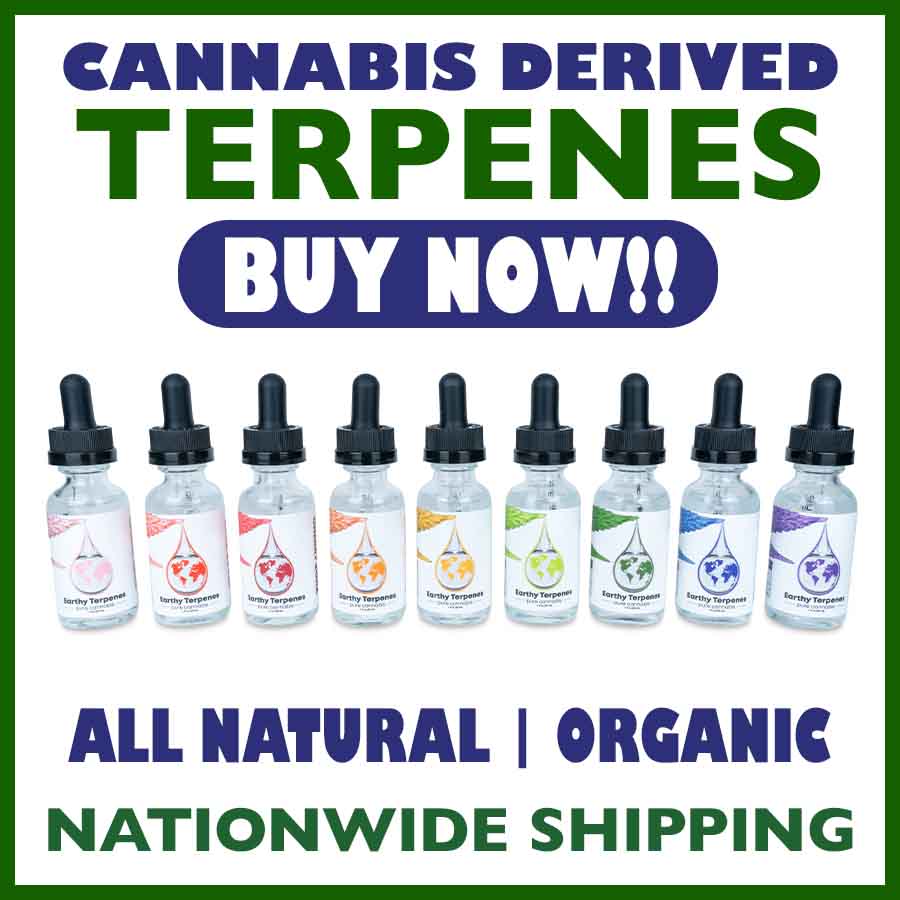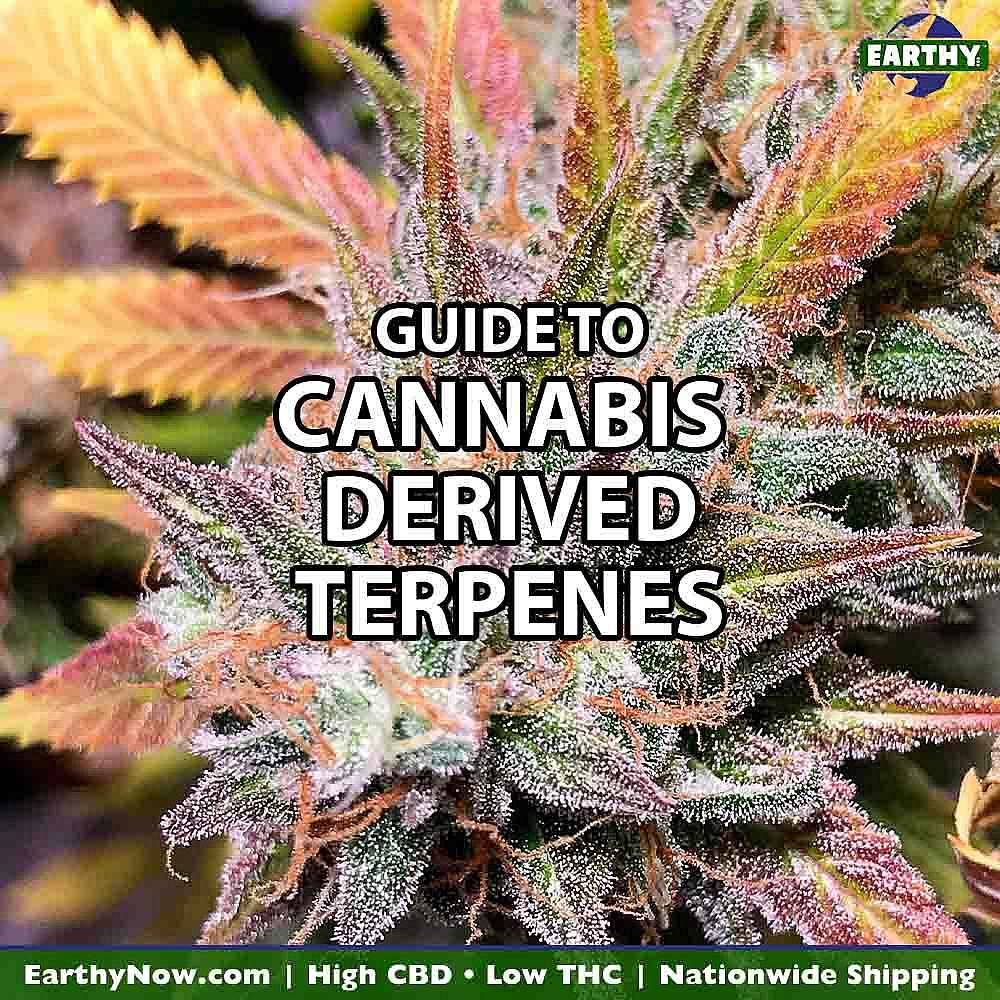What are terpenes?
Curiosity about terpenes has lit up the cannabis scene recently with the influx of exciting new products into the mainstream. But, what are terpenes, and why should we care about them?
Terpenes are in our food, the flowers we smell, and, yes, the cannabis products we enjoy. They are simply organic compounds found in plants, and even some insects, which affect the way they smell and taste. Cannabis plants just happen to contain high concentrations of these aromatic compounds.
Different terpenes determine the characteristic aroma of a plant. For instance, the common terpene linalool gives lavender its distinctive floral scent, or the terpene pinene contributes to the woody, earthy aroma of pine trees and rosemary. In essence, the unique fragrance of a plant comes from the particular combination of terpenes that give off their respective scents.
What’s more, the scent of a plant can help it survive. Terpenes can protect plants from being eaten by insects or other animals by giving off a repellent scent [1]. On the other hand, terpenes may emit pleasing aromas to attract pollinators, like the terpene limonene in citrus fruits and other plants.
In the same manner, the distinctive terpene content of each cannabis strain works to assist in the plant’s survival by attracting or repelling friends and foes while endowing it with its distinctive smell and taste. Likewise, the hemp market has found that terpenes attract cannabis consumers to their favorite strains much like eager bees to the most fragrant flowers.
Terpenes vs. flavonoids
Like terpenes, flavonoids are not exclusive to the cannabis plant. They give plants their characteristic pigments. For instance, the flavonoid flavone creates the pigment in blue- and white-flowering plants like chamomile, peppermint, and parsley.
Flavonoids, like terpenes, help plants survive by warding off predators while attracting pollinators. However, flavonoids do not primarily affect smell and taste in the same manner as terpenes. Lucky for us, flavonoids provide powerful antioxidant properties, antibacterial properties, and cancer-fighting properties [2].
What are cannabis-derived terpenes?
Like other botanical-derived terpenes, cannabis terpenes give a cannabis plant its specific smell and taste. Additionally, cannabis terpenes may offer beneficial properties.
As regulations surrounding cannabis products become less strict, scientists continue to research the benefits of terpenes. In the meantime, cannabis enthusiasts flock to their favorite smelling and tasting cannabis strains. Each strain contains its own distinctive terpene profiles and perks.
Learn more in the Guide to CBD.
Botanical vs. cannabis terpenes?
Although cannabis is technically botanical, as it is a plant, the cannabis industry often refers to terpenes that do not come from the cannabis plant as botanical terpenes. As more people learn about the prominent terpenes in cannabis, terpene enthusiasts seek out new and exciting variations. Select manufacturers like Earthy use the terpene trifecta to formulate the most desirable combinations of terpenes while creating superior products such as pure aromatic extracts, vapes, smokables, edibles, and topicals.
Prevalent terpenes from non-cannabis plants, on the other hand, can also enhance cannabis products with essential oils. For instance, CBD topicals, like Earthy’s Soothing Relief Salve, feature essential oils like lemongrass, lavender, and rosemary with their own distinctive non-cannabis terpenes.
Types of cannabis terpenes: marijuana and hemp
Marijuana and hemp come from the cannabis plant. The 2014 and 2018 Farm Bills (see next section) established new federal legal definitions and rules for hemp, including that hemp and “and any part of that plant, including the seeds thereof and all derivatives, extracts, cannabinoids, isomers, acids, salts, and salts of isomers, whether growing or not, with a Delta-9 tetrahydrocannabinol concentration of not more than 0.3 percent on a dry weight basis” may be legally used for production, sales, transport, and use.
So, cannabis with less than .3% Delta-9 THC is defined as hemp, while cannabis with more than .3% Delta-9 THC is defined as marijuana.
Originating from the same plant, marijuana and hemp both contain terpenes. However, the main difference between the two plants is the type of cannabinoids associated with them. The most well-known cannabinoid in hemp is the non-psychoactive CBD (cannabidiol), whereas, the psychoactive cannabinoid in marijuana is THC (tetrahydrocannabinol). Both types of plants share many of the same terpenes, which is why they often have a similar smell. However, you cannot get “high” from either hemp or marijuana terpenes.
Though there are more than 100 terpenes in each cannabis flower, whether it is hemp or marijuana, the most common terpenes in both are limonene, beta-pinene, ocimene, myrcene, linalool, delta-3-carene, eucalyptol, humulene, and beta-caryophyllene [3].
The differences between the terpenes in marijuana and hemp depend on the strain of each plant in question. For example, some of the terpenes found in Indica strains—which can be either hemp or marijuana— are myrcene, beta-caryophyllene, linalool, limonene, and humulene. People have described these strains as smelling and tasting of cloves, or piney and skunky, which is primarily due to the myrcene.
On the other hand, some of the terpenes in Sativa strains—also, either hemp or marijuana— are caryophyllene, d-limonene, myrcene, pinene, linalool, alpha-terpineol, and camphene. As such, some of these terpenes are the same as Indica strains, yet others are different, resulting in a different flavor.
Ultimately, the smell and taste of the different strains of both hemp and marijuana can add to their benefits. Just as essential oils like lavender might be helpful, terpenes in both hemp and marijuana may serve a similar purpose.
Farm Bills and terpenes
The 2014 Farm Bill removed hemp from the list of Schedule 1 substances, and was the seed of hemp’s recent resurgence. The Bill allowed long-forbidden research into hemp-derived cannabinoids to begin in earnest.
The 2018 Farm Bill expanded on this, allowing people to produce, sell, and consume hemp-derived products, making it clear to legal experts that all other plant materials and substances derived from legally-defined hemp are also federally-compliant [4].
The passing of the Bills allowed for widespread hemp cultivation as long as the hemp grown had THC levels below .3 percent. Since then, a new wave of enthusiasm about hemp has spread across the U.S. as hemp farming, manufacturing, sales, and transport have increased. Along with these changes, exciting new products have entered the stage of the hemp market while more recently, common cannabis-derived terpenes have landed in the spotlight. Increasingly, both scientists and consumers discover more reasons to sing their praises.
Since Earthy terpenes do not contain THC or other drugs, they do not produce psychoactive effects. For this reason, their presence in products fully conforms to the guidelines of the Farm Bill.
Why are hemp-derived terpenes the future?
Without question, cannabis has a great deal to offer people. For instance, the medicinal properties of particular cannabinoids like CBD have become virtually incontrovertible. Additionally, with an increasingly deeper understanding of how terpenes work to enhance people’s experience of the plant, more people continue to seek them out in the products they buy.
Accordingly, hemp-derived terpenes will likely become even more popular as more people discover them, providing new opportunities for novel products.
Vapes, beverages, and cosmetics are prime examples of markets ripe for the addition of cannabis terpenes. Like essential oils, a few drops of terpenes can go a long way in transforming an otherwise humdrum product into something cutting-edge and exciting. Cannabis-derived terpenes are quickly becoming a key ingredient in everything from bath bombs to sports drinks.
Along with the coveted CBD-infused products, cannabis terpenes are poised to usher in the next wave of cannabis innovation.
Primary vs. secondary terpenes
In all cannabis strains, there are both primary and secondary terpenes. A primary terpene is a major component of the plant’s taste and aroma. Some common primary terpenes are pinene, limonene, humulene, and myrcene.
On the other hand, a secondary terpene will also influence the plant’s smell and taste, but less so. Common secondary terpenes include borneol, phytol, eucalyptol, and sabinene.
For many, the smell of a specific strain will prompt them to remember the experience of when they last used the product, evoking a similar feeling or expectation of how the plant will affect them each time. Most of what they perceive as the strain’s aroma comes from the primary terpenes, yet, the secondary terpenes, though more subtle, may still contribute to the overall smell and taste.
How do terpenes affect cannabis strains?
Put simply, a given terpene is what makes a strain smell or taste different from other strains. Additionally, they may add to the effects. With a vast variety of strains on the market, the potential combinations of terpenes available to consumers are abundant.
Terpenes in essential oils
Terpenes are what give essential oils their specific aromas. Some of the most commonly found terpenes in essential oils are also found in cannabis. For example, the limonene found in cannabis is the same terpene present in bergamot, fennel, lemon, orange, and other citrus oils. Or, pinene, which is found in cannabis strains such as OG Kush and produces a woody aroma, is also found in coriander, cypress, eucalyptus, pine, black pepper, and oregano.
Like the botanical terpenes in essential oils, those found in cannabis have the potential to soothe and relieve.
How are terpenes made?
The two main methods for terpene extraction are solvent-based and solventless extraction. In order to preserve the pure aromas and flavors of terpenes, the process must be conducted carefully. Too much heat or pressure can lead to the breakdown of the terpene chemical structure.
Thus, it’s important to buy high-quality terpenes from reputable companies like Earthy—products that are 100% cannabis-derived, all-natural, and strain-specific, with no additives.
Earthy uses organically grown, morning-harvested cannabis right from the field—never dried or frozen—for the freshest possible terpenes. Earthy’s solventless extraction process maximizes potency and ensures purity in every bottle.
What are the effects of cannabis-derived terpenes?
Countless cannabis users have reported how terpenes enhance their experience of cannabis. Moreover, recent studies support many of these anecdotal findings. The paper, “Cannabis sativa terpenes are cannabimimetic and selectively enhance cannabinoid activity,” was published recently in Scientific Reports, indicating that terpenes mimic the effects of cannabinoids.
Do terpenes get you high?
Terpenes do not get you high. However, they can affect how you feel. Like receiving a massage with lavender-scented oil, they can help you relax, calm your mind and body, and enhance your experience. They also may work alongside cannabinoids, and cannabinoid receptors, to elevate the effects of cannabis.
Cannabis-derived terpenes and the entourage effect
There is some evidence to indicate terpenes influence the entourage effect: the way in which cannabis compounds like cannabinoids work synergistically to enhance the overall effect on the body.
The entourage effect, in relation to cannabis, was first coined by Mechoulam and Ben-Shabat in their 1998 hypothesis that proposed other organic compounds work in tandem with the primary endogenous cannabinoids, thereby enhancing the effects of cannabis.
A study published recently in Science Daily suggests that terpenes contribute to the entourage effect.
Are cannabis-derived terpenes legal?
Yes. All hemp-derived terpenes are legal because they are from hemp and contain less than .3% Delta-9 THC. As long as terpene products conform to the guidelines, they are fully compliant with Farm Bill regulations and the law. They do not contain psychoactive properties and are allowed on the market.
How do you use cannabis-derived terpenes?
The most common way that people utilize cannabis terpenes is when they are passed into the body through inhalation (vaping/smoking), absorption (topicals), or consumption (edibles/beverages).
However, terpenes that have been extracted can also be added to other products to affect the taste and aroma of that product. For example, cannabis terpenes can enhance a CBD massage oil, endowing it with an especially desirable smell.
Cannabis-derived terpenes in vapes
When you extract terpenes to flavor products like vapes, you are adding scents that may also promote benefits. That’s why cannabis terpenes are a preferable flavoring agent to either synthetic terpenes or artificial flavors.
Since every strain of cannabis Sativa contains a medley of different terpenes, each respective strain flavor is cultivar-specific. The terpenes present in Grape Ape, for example, will taste different from Sour Diesel because of its unique combination of terpenes. By extracting the terpenes present in a particular cannabis strain, it’s possible to replicate that strain’s unique flavor in a vape cartridge.
All things considered, cannabis terpenes are the best choice when it comes to naturally flavoring vape cartridges. Even cannabis terpenes, however, vary in quality, so it’s important to choose vape cartridges that include the best types of terpenes available on the market.
Cannabis-derived terpenes in beverages
It’s easy to add terpenes to beverages because extracted terpenes are water-soluble. It only takes a few drops in a glass of water for a beverage to transform into a flavorful refreshment. For an individual, 1-4 drops per 8 ounces of water is a good rule of thumb.
By contrast, in commercial enterprises such as restaurants or distilleries, terpenes can be added to large batches of beverages to enhance their flavors. Following the same approximate ratio, one ounce of terpenes could infuse many gallons of liquid.
Cannabis-derived terpenes in cosmetics
The presence of botanical terpenes in cosmetics is ubiquitous. People love lotions that smell of essential oils like lavender or perfumes and shampoos that smell of mint or coconut. But, what about cannabis extract? Cannabis terpenes are relatively new on the cosmetics scene, yet have the potential for enormous popularity. As more people gravitate to their favorite cannabis terpene aromas, more customers demand their cosmetics include them.
Top 5 cannabis terpenes
Though there are hundreds of terpenes in cannabis, the five most prominent terpenes are myrcene, limonene, pinene, beta-caryophyllene, and ocimene. Learn about the top 20 cannabis derived terpenes.
Myrcene
Myrcene is the most abundant terpene in cannabis. It gives off the mango-like, earthy, clove-like scent that has become a favorite of cannabis connoisseurs. If you notice a particular strain has a woodsy smell, myrcene is likely the culprit.
Also found in hops, myrcene is responsible for the peppery, balsam-like fragrance in beer. Lemongrass, which has been used in traditional folk medicine for centuries, is another fragrant plant high in myrcene.
Limonene
Both Sativa and Indica strains of cannabis express this citrusy terpene. The second most common terpene in nature and the third in cannabis, limonene is also found in oranges, lemons, grapefruits, and a host of other plants.
Pinene
One of the most researched terpenes in cannabis, pinene comes in two varieties: alpha-pinene and beta-pinene. The former gives off a distinct aroma of pine needles and rosemary while beta-pinene smells more like dill, basil, and hops.
The most common terpene in the plant world, pinene is present in other plants such as basil, cedar, and conifer trees.
Beta-caryophyllene
Cannabis strains rich in beta-caryophyllene offer a warm, peppery smell and taste. Some describe the aroma as “spicy,” “cinnamon-like,” or reminiscent of “diesel.”
Beta-caryophyllene is abundant in many plants including black pepper, oregano, and basil.
Ocimene
High in many cannabis strains, ocimene is also in plants such as mint, basil, kumquats, mangos, orchids, and bergamot. Because of its sweet, fruity, and earthy aroma, it is used in everyday products like perfumes, fabric softeners, antiperspirants, and cleaners. Notwithstanding its pleasing scent to humans, many insects don’t like the scent of ocimene, making it an ideal insecticide.
What are the best terpenes?
There are likely millions of answers to questions about which terpenes are the best. These answers boil down to an individual’s subjective idea about which strains smell and taste the best and how it affects their experience.
However, particular terpenes have been linked to specific benefits. Ultimately, the best way to choose your favorite terpenes is to try out certain strains and then determine which you prefer.
How do you buy cannabis-derived terpenes?
It’s important to buy high-quality terpenes from reputable companies like Earthy which are 100% cannabis-derived, all-natural, and strain-specific with no additives.
Do terpenes have THC?
Terpenes do not contain THC. Thus, they do not produce psychoactive effects. However, the terpene content of a particular strain of cannabis may influence the entourage effect by interacting with cannabinoids to elevate a user’s experience.
Final thoughts on cannabis-derived terpenes
As consumers find more things to love about cannabis-derived terpenes, companies that sell hemp-related products find new and innovative ways to enhance their merchandise with the aromatic ingredients. Ultimately, there will be a lot more than pollinators swarming around the best-smelling terpenes. Anyone who loves the scents and sensations of cannabis is bound to see what all the fuss is about.
Disclaimer – Information is provided for educational purposes. It does not, and is not intended to, constitute legal advice or medical advice. We attempt to be accurate and up to date but the legality of cannabinoids and the science of cannabis is evolving. The author is neither a lawyer or a legal expert, nor a doctor or medical expert. You should check with your local authorities and medical providers before buying or using any products.







